
Do we have enough terms for green? Spring green. Lime green. Mint green. Olive green. Sage green. Forest green. Chartreuse. Moss green. Sea green. Pea green. We need them right now, because our delayed spring has suddenly burst into the greens of summer.
And whites. And pinks. And reds. And purples. And yellows.
In fact, so many trees, shrubs, and plants are busy attracting pollinators with their colour, their nectar, and their fragrance—so that the pollinators carry the plant’s pollen to their female reproductive organs—that it could fill a book. That’s an idea! Stay tuned.
Let’s start with a couple of conifers. After all, gymnosperms were on this planet long before angiosperms, the plants that grow botanically imperfect and perfect flowers. Back to the conifers. These two pines with papery fascicles of pairs of needles are in the group of hard pines in Pinaceae, the pine family.
Walking home recently, the “candles” of new growth on an exceptionally tall evergreen drew my eye. I identified the species as Pinus contorta var. latifolia, commonly known as Rocky Mountain lodgepole pine, the variety of Pinus contorta that grows inland. No wonder it is such a tall tree, if it grows by such leaps and bounds every year, as indicated by these candles. Note the way the pollen cones stack together under the candles of needles about to expand out. Another even taller trio of candles grew above a trio of tiny seed cones about 3.5 cm long each. They have a lot of growing to do.
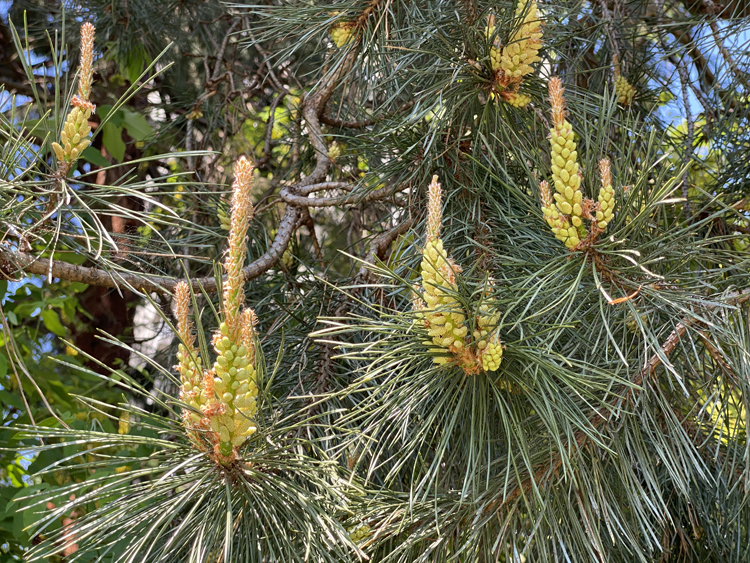
The second pine is growing tall in a back alley, near some garbage cans. It is Pinus nigra, commonly known as black pine or Austrian pine, and native to, you guessed it, Austria, but also to other places in southern Europe, northwest Africa, and parts of Asia. Its spiky yellow pollen cones stand out against its forest-green foliage. The needles were longer than the needles of the lodgepole pine, almost hiding the grey-coloured candles of new needle growth.
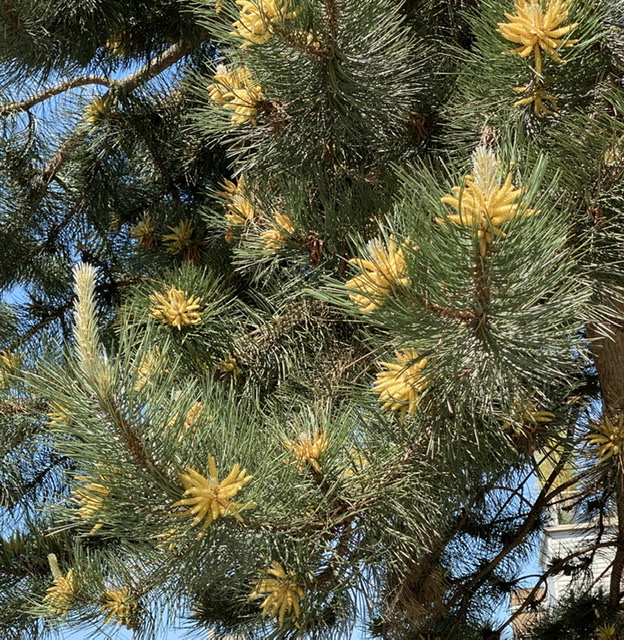
A wisteria vine, Wisteria floribunda, was in fully glory with its many hanging racemes of purple flowers when by chance I took a side street en route somewhere. Of course, I had to pull over to take a photo. Being a member of Fabaceae, the pea, bean, and legume family, wisteria has five petals each with its own function: a large upright banner petal with two yellow nectar markings (showing pollinators the route to take to get to the nectar), two wing petals on either side of the banner, and two petals almost joined to be the keel, where the reproductive organs await pollination. What better plant to enjoy than this one on Mother’s Day!

In walking around Lost Lagoon another day, I saw native honeysuckle, Lonicera involucrata, in bloom. This shrub is commonly known as black twinberry. Each of its tiny flowers seems to comprise two yellow flowers hooded by a wavy, protective reddish cap that turns out to be one or more bracts. The leaves of this honeysuckle grow oppositely and the black fruit, when they ripen, are inedible for humans but ideal for birds, bears, and small mammals.
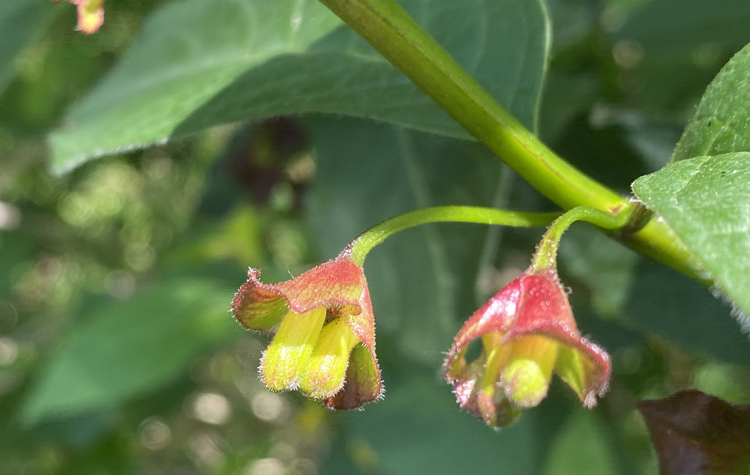
Lilac trees bloom in May, growing panicles of either white or pink or pale purple or deep purple flowers. These panicles often grow in pairs. The flowers comprising four fused petals open from the bottom of the panicle to the top. The fully open flower is lighter in colour than the bud, always creating a gradation of whatever colour the flower is. Lilac’s pairs of opposite light green leaves are heart shaped. This is a perfect, easy care addition to any front or back yard. Lilac, Syringa vulgaris, is in Oleaceae, the olive family of odoriferous flowers, which perfectly describes lilac.
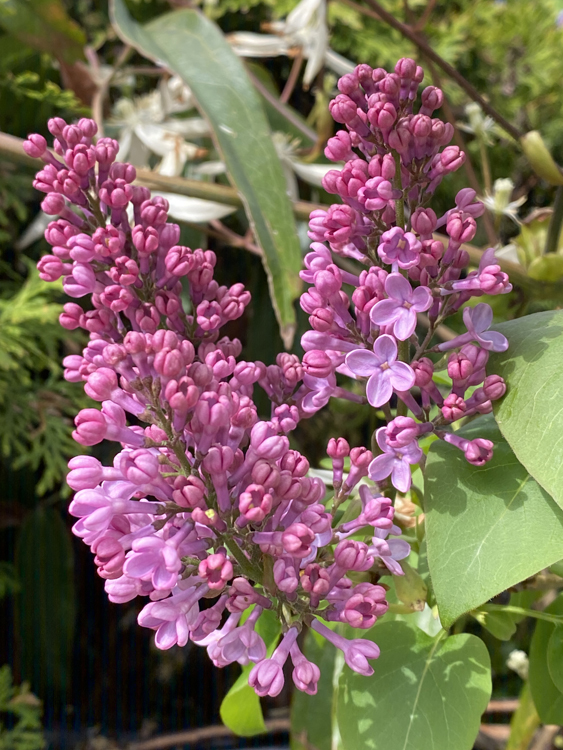
Can you see the ladybug hiding among the clusters of perfect flowers on this Choisya ternata shrub? Mexican orange blossom is an evergreen that is attractive all year long, but especially in spring, when its flush of new leaves are a lighter green than last year’s leaves, and then when its flowers are so bright and fragrant. Its pollinators are bees, butterflies, and—I’m only guessing—ladybugs.
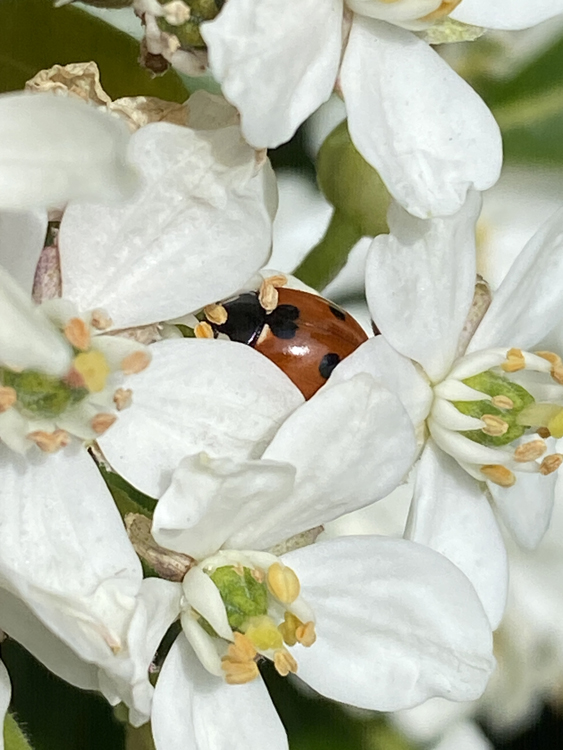
We were just looking deep inside a Mexican orange blossom, so now, we’re looking deep inside a peony flower. It’s growing on a shrub known erroneously as “tree” peony, Paeonia suffruticosa, which is Latin for “a somewhat woody peony.” These deep pink petals, too many to count, are hiding the flower’s reproductive organs from all but the persistent pollinators—bees and ants. The resulting fruit from each flower are five plump pods holding many large black seeds. It is possible to grow a peony shrub from seed, but be prepared to wait, for it will be from three to five years before you will enjoy its blossoms. And there’s no guarantee on the colour, for a peony shrub enjoys open pollination.
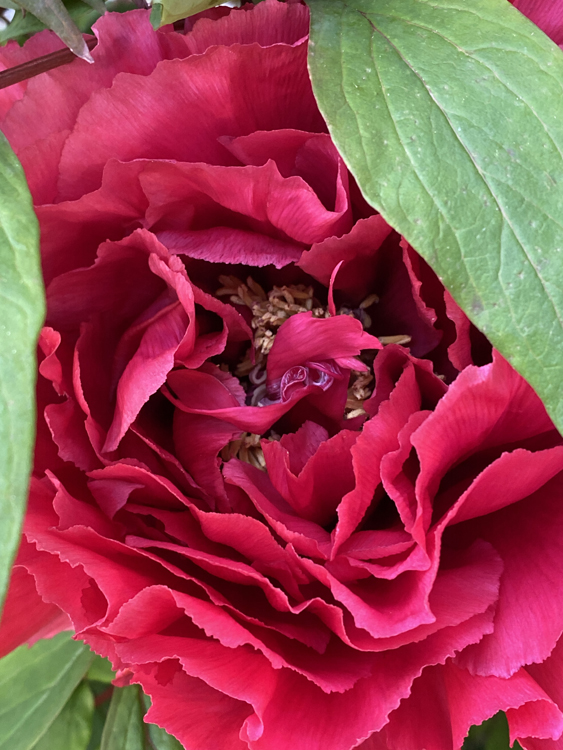
The next three plants are in Rosaceae, the rose family. First is the ubiquitous evergreen shrub, cherrylaurel, Prunus laurocerasus. Every part of cherrylaurel is poisonous, so this is not a plant to put in a school playground or a backyard. But it does work well as a hedge, a fence, a barrier, or even a windbreak, because this “shrub” can grow as tall as 5.5 m, which is considered a tree of medium height. Even so, it is usually kept at shrub height with regular shearing.

Each white spike of staminous cherrylaurel blossoms grows upright in the axil of a leaf. Pollinators are butterflies, honeybees, and bumblebees. (It’s time to listen to Nikolai Rimsky-Korsakov’s “Flight of the Bumblebee.”) Each of the many flowers will later turn into red and then black cherry-like poisonous fruits.
The next Rosaceae plant is Malus floribunda, Japanese crabapple, one of my favourite street trees, with its range of colours all at once—deep pink buds and pink half-open flowers and almost-white open flowers. All these colours contrast with the leaves, which are, dare I say it, apple green. The City of Vancouver (CoV) has planted over four thousand apple trees, 1,639 of them being floribunda.
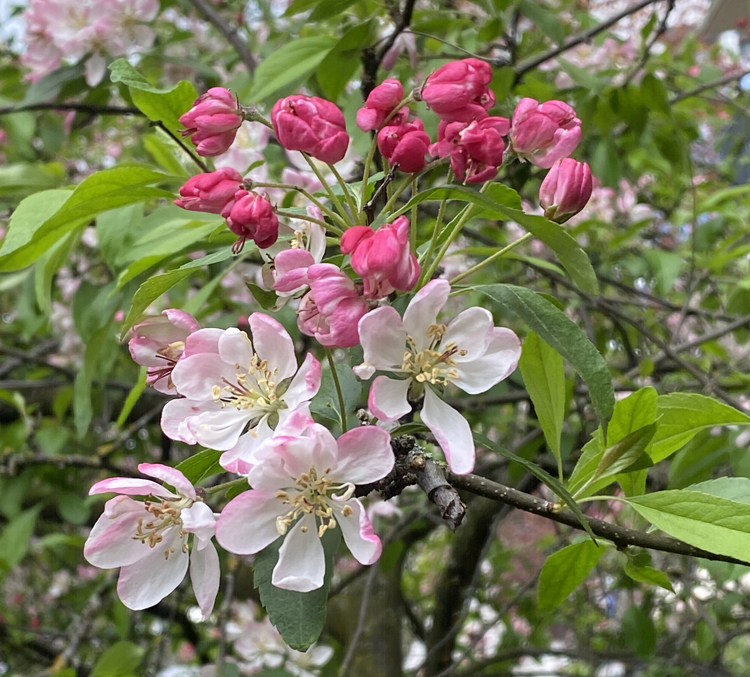
And here is a regular apple tree, Malus domestica, growing in my daughter’s pollinator garden.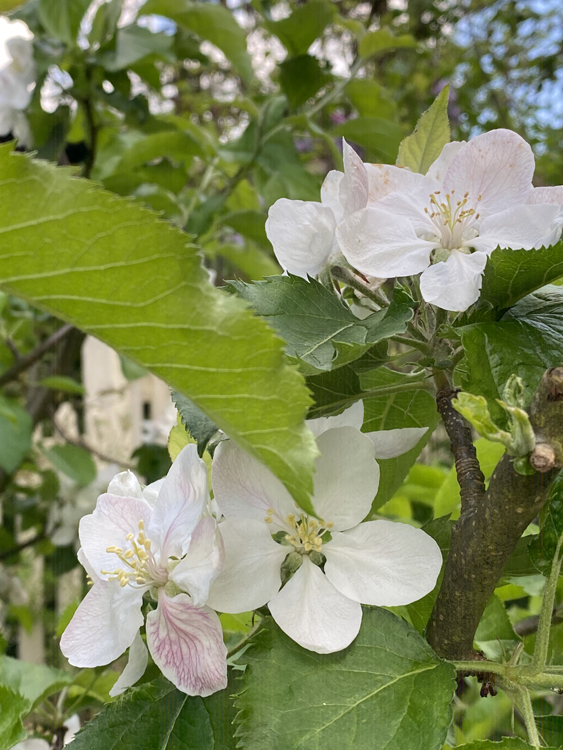
Acer platanoides is a Norway maple of which CoV has planted twelve thousand. This particular cultivar, called ‘Fairview’, was planted twenty-four years ago, but it’s already quite tall. My photo shows how the tree’s insect-pollinated perfect yellow flowers contrast with the bronze leaves and the grey-to-brown, moss-covered bark.
Lastly, here is a charming dogwood, a genus whose bright pink bracts are often taken for the flower’s petals. It’s Cornus florida. But there, at the centre of the four notched petals, are the perfect flowers. Being so showy, this is an ideal tree for a front garden, an entrance way, and even in a group with other Cornus trees. This species’s scientific name means “flowering dogwood,” but I remember it as the dogwood that also looks wonderful when the leaves stop photosynthesizing in the fall and turn glorious coral and salmon colour, and again in winter when this dogwood’s skeleton is quite enchanting.
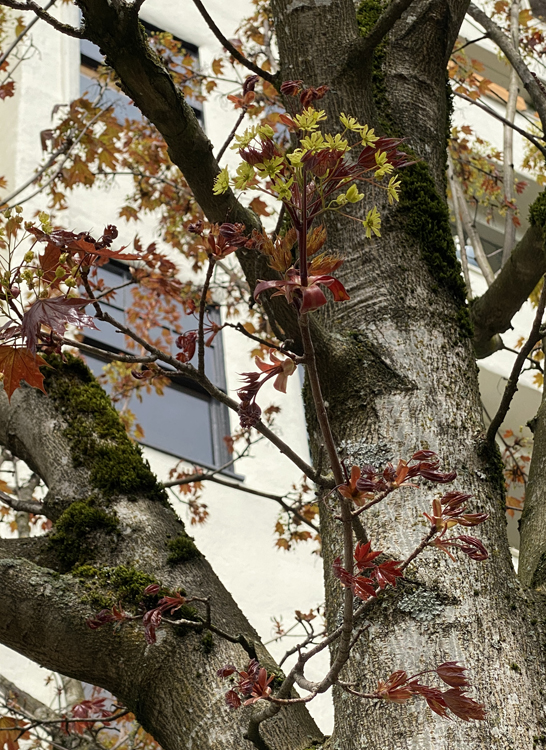
I’m now going for a walk in the Ted and Mary Greig Rhododendron Garden in Stanley Park. So many of the cultivars there are now in bloom and they look and smell beautiful.
Photos & text VMG Nina S.
Footnote 1 Street Trees